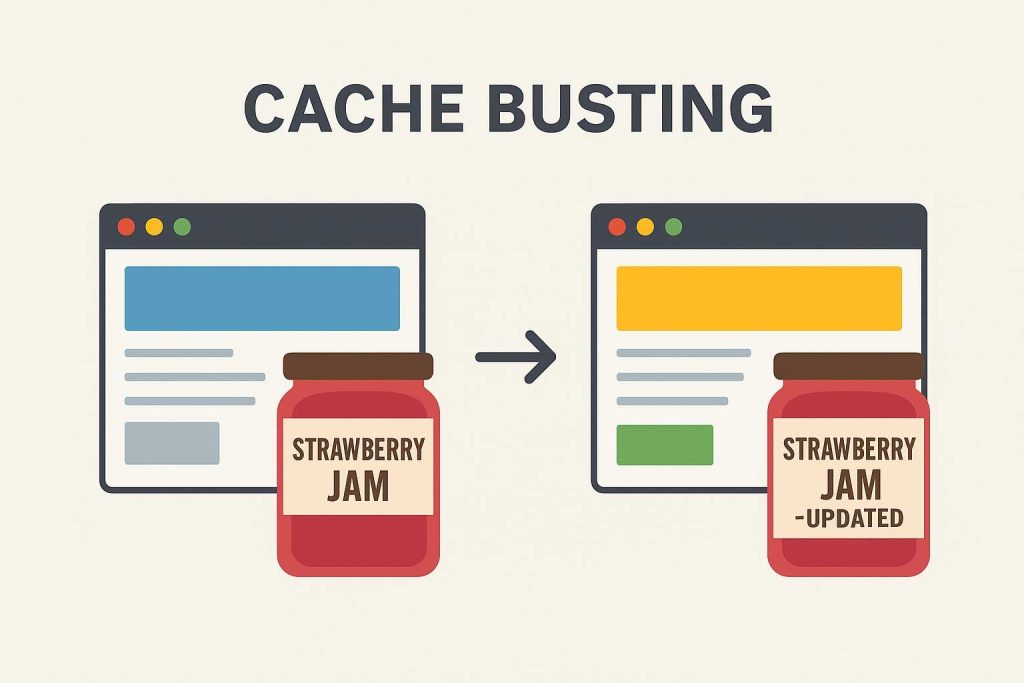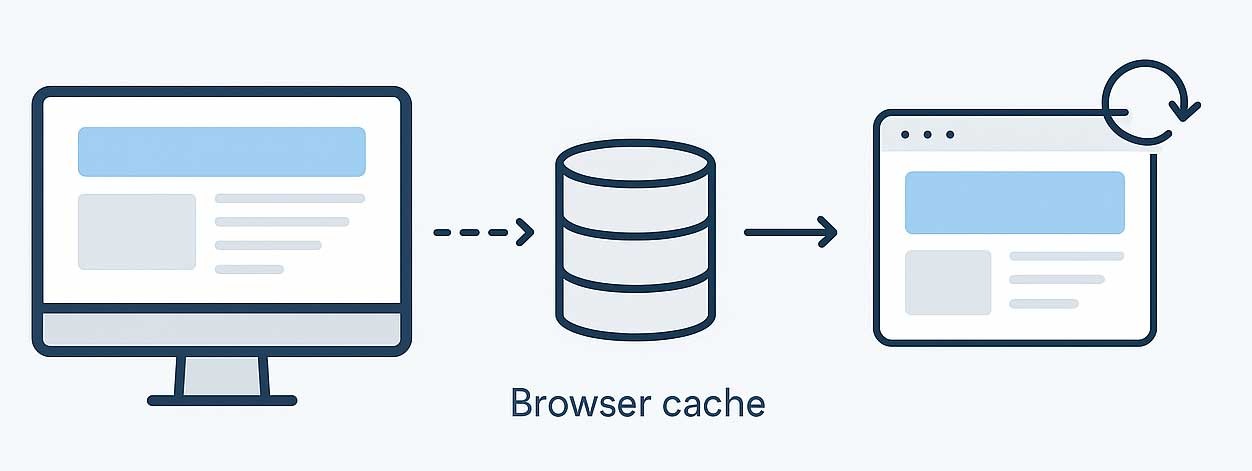What is cache busting (and why your website needs it)
Have you ever updated your website maybe changed an image, fixed a typo, or redesigned a page only to hear from someone that “it still looks the same”?
That’s not uncommon. It’s usually a caching problem.
Modern browsers and servers try to speed things up by storing copies of your website’s files, like images, stylesheets, and scripts. This is great for performance, but it can backfire when you make updates. Instead of seeing your new content, visitors may still get served the old version.
The solution is something called cache busting.
So, what exactly is cache busting?
Cache busting is a way of telling a browser: “Hey, this file has changed, grab the new version instead of using the one you saved earlier.”
Think of it like changing the label on a jar. If you keep calling every jar “strawberry jam,” it might get confusing when you start changing the contents of the jar perhaps even storing raspberry jam in them. But if you update the label each time, you always know what’s really inside.

Why cache busting matters
If you’ve ever made a change to your site, like fixing a typo or updating an image only to have a colleague say:
“I don’t see it, are you sure you updated it?”
You probably told them to “refresh your cache” or press Ctrl + Shift + R.
That’s exactly the problem cache busting solves. Instead of relying on every visitor to manually clear their browser cache, cache busting makes sure the new version appears automatically.
This matters because:
- Accuracy: Visitors always see the right information.
- Consistency: You don’t have to explain to peers, clients, or customers how to “clear cache.”
- Trust: Your site looks polished and professional.
How cache busting works (in simple terms)
You don’t need to be a developer to understand the basics. Cache busting usually works in one of two ways:
- Renaming files. Instead of always calling your stylesheet style.css, you might update it to style-v2.css or style-2025.css. The browser sees it as a new file and downloads it.
- Adding a tag. Sometimes a little “tag” gets added to the end of a file’s link, like style.css?v=2. The browser treats this as a fresh file, even though the name looks almost the same.
Either way, the trick is the same: change the label so the browser knows to fetch the latest version.
The Benefits
By using cache busting, you get the best of both worlds:
- Speed. Visitors still benefit from caching, because unchanged files don’t reload every time.
- Accuracy. Updates show up right away, so no one is stuck looking at old content.
- Trust. Your audience knows your site is reliable and current.
Final thoughts
Cache busting may sound like a behind-the-scenes technical detail, but it’s really about user experience. Whether you’re running a small business site, a charity, or a large organization’s site, you want your visitors to see the right information at the right time.
By making sure your website “busts” old caches and delivers fresh content, you can keep things fast, accurate, and frustration-free.
